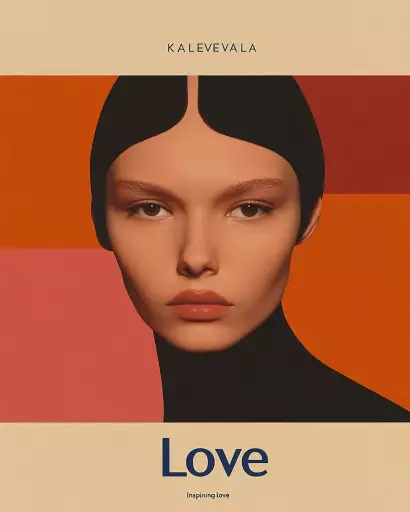Explore the Best AI Image Gallery

Beyond Pixels: How AI-Generated Visual Content is Transforming Creativity
The realm of creativity is undergoing a seismic shift, driven by the emergence of artificial intelligence (AI) capable of generating stunning visual content. From photorealistic images to captivating animations, AI algorithms are pushing the boundaries of whats possible, impacting artists, designers, and industries in profound ways.
A New Frontier for Creative Expression
AI-powered tools empower creators with unprecedented capabilities. Imagine instantly visualizing your ideas, generating unique artwork tailored to specific themes, or crafting immersive environments for virtual experiences. This technology democratizes creative processes, making it more accessible to individuals who may not possess traditional artistic skills.
Applications Across Industries
- Marketing and Advertising: AI can generate eye-catching visuals for campaigns, personalize marketing materials, and create engaging social media content.
- Design and Fashion: Designers can leverage AI to explore new concepts, experiment with textures and patterns, and rapidly prototype designs.
- Entertainment: AI-generated visuals enhance video games, film production, and animation, creating realistic characters, environments, and special effects.
- Education and Research: Researchers can utilize AI to visualize complex data, create interactive learning experiences, and explore innovative scientific concepts.
Ethical Considerations in the Age of AI
While the potential benefits are immense, the rise of AI-generated visual content raises important ethical considerations:
- Copyright and Ownership: Questions arise regarding the ownership and copyright of AI-generated artwork. Who holds the rights – the creator who inputs the prompts, the developer of the AI algorithm, or the AI itself?
- Bias and Representation: AI algorithms are trained on vast datasets, which can contain biases that reflect societal prejudices. This can result in AI-generated content perpetuating harmful stereotypes or excluding underrepresented groups.
- Misinformation and Deepfakes: The ability to create highly realistic synthetic media raises concerns about the spread of misinformation and the potential for malicious use, such as creating convincing fake news or impersonating individuals.
Navigating the Future of AI-Generated Visual Content
As AI continues to evolve, its crucial to approach its integration into the creative industry with a thoughtful and responsible mindset.
- Promote Transparency and Accountability:** It is essential to clearly identify AI-generated content and disclose the role of algorithms in its creation.
- Address Bias and Promote Diversity:** Developers and users must actively work to mitigate biases in training data and ensure that AI-generated content reflects a diverse range of perspectives.
- Establish Ethical Guidelines and Regulations:** Governments and industry organizations should collaborate to develop ethical guidelines and regulations for the development and use of AI-generated visual content.
The fusion of creativity and artificial intelligence holds immense promise, transforming how we express ourselves, design our world, and experience entertainment. By embracing responsible innovation and navigating the ethical challenges with care, we can harness the power of AI to unlock new frontiers in creative expression and shape a future where technology empowers human imagination.
](https://images.ai-img.art/thumbnails/150/157712d76865d557120f9baf988de3d0525225295a2789c89bf2c4a5a96a03d1.webp)






](https://images.ai-img.art/thumbnails/150/9d51c5e673b4f2068b7b01abc35425a06f173b76303adf9ad29ca14302c25b18.webp)








![**Representation: A dog acting as a private tutor to a child. The dog holds a ruler in its paw and stands at the blackboard to explain a dog diagram to the child. Graphic style: Line drawing, cartoon style, influenced by Franco-Belgian comics, thick black lines, simplified design, vector, black and white only, in the style of Keith Haring or the French comic strip "Alinéa". [IMPORTANT]: A single continuous line extending from one side of the image to the other, minimalist, strong outlines, line drawing, without lifting the hand, ultra-simplified, no shading, entirely white image, drawing created in the center of a sheet of paper. --ar 16:5** - Variations (Strong) by <@627984126871470085> (fast)](https://images.ai-img.art/thumbnails/150/f4e034998ccd869d8a061fd12017514fcd92210eb33d4222dc9b54716223f4dd.webp)
](https://images.ai-img.art/thumbnails/150/51c93500396faff4e7fa8b42bc68033067b16b2230e3496e95c482a581ff0fe9.webp)
![**Representation: A teenager smiling while thinking about a friendly dog, a comic-style thought bubble with a friendly dog inside. Graphic style: Line drawing, cartoon style, influenced by Franco-Belgian comics, thick black lines, simplified design, vector, black and white only, in the style of Keith Haring or the French comic strip "Alinéa". [IMPORTANT]: A single continuous line extending from one side of the image to the other, minimalist, strong outlines, line drawing, without lifting the hand, ultra-simplified, no shading, entirely white image, drawing created in the center of a sheet of paper. --ar 16:5** - <@627984126871470085> (fast)](https://images.ai-img.art/thumbnails/150/6fc850f638e3dee0c4b121acecad2c8419e02bdeac7f871d625f1003c1c3abe1.webp)





















![**Representation: A dog acting as a private tutor to a child. The dog holds a ruler in its paw and stands at the blackboard to explain a dog diagram to the child. Graphic style: Line drawing, cartoon style, influenced by Franco-Belgian comics, thick black lines, simplified design, vector, black and white only, in the style of Keith Haring or the French comic strip "Alinéa". [IMPORTANT]: A single continuous line extending from one side of the image to the other, minimalist, strong outlines, line drawing, without lifting the hand, ultra-simplified, no shading, entirely white image, drawing created in the center of a sheet of paper. --ar 16:5** - <@627984126871470085> (fast)](https://images.ai-img.art/thumbnails/150/7a854648a81e51241dcca8d24dd6e3bfcf07ad1df51baf401c9b729f4cf411fa.webp)



